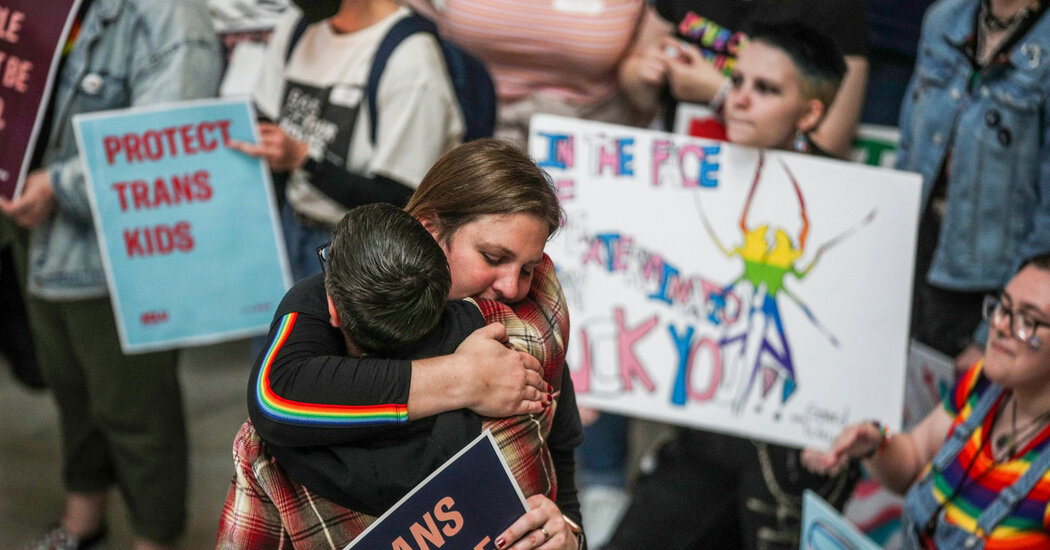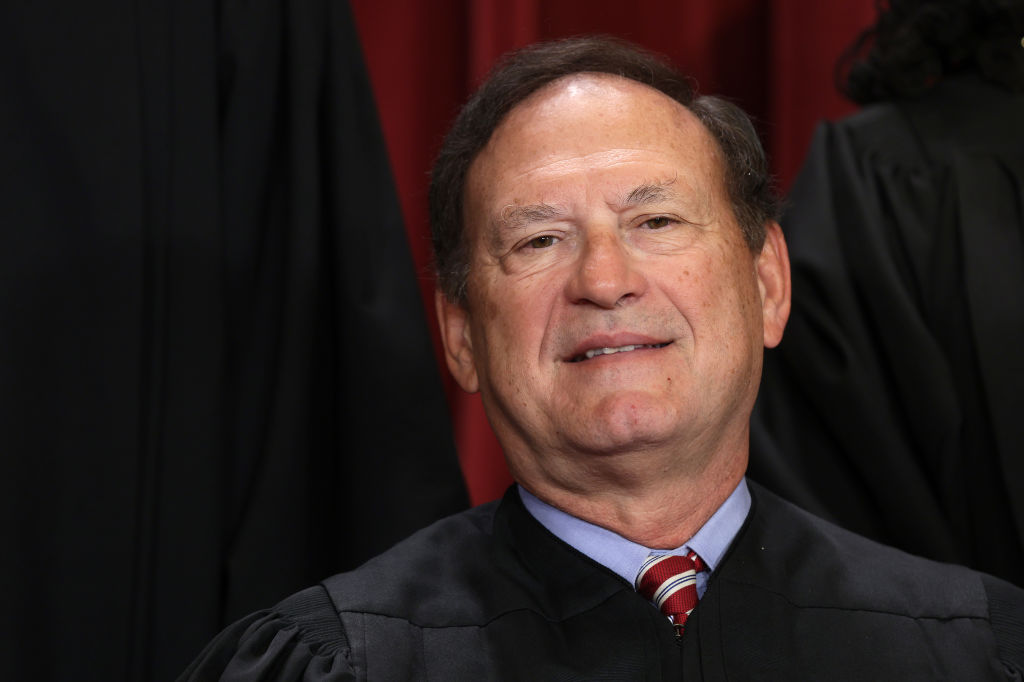dirtmayor
he/him
- 159 Posts
- 25 Comments

 20·1 year ago
20·1 year agoThey dug the Beehaw vibe 🐝

 2·1 year ago
2·1 year agoThe admins seem to be crushing it so far. Go admins! You can do it! 🦸🏽♀️

 1·1 year ago
1·1 year agoI love seeing people around the internet mentioning Lemmy and other fediverse spaces. It’s so validating and exciting 🙂

 3·1 year ago
3·1 year agoNot sure what’s going on, Archive/Original links seem to be working for me. Here’s the text from the article for you:
The ‘Super Racist Stuff’ Behind the DOJ’s Report on Minneapolis Policing
By Karl Vick June 16, 2023 5:22 PM EDT Damning as it was, most of what the U.S. Department of Justice announced about the Minneapolis Police Department on Friday had been documented a year ago by the state of Minnesota’s Department of Human Rights. Each report involved interviews with more than 2,000 people, and describes a police agency rife with excessive force, racial profiling, lack of accountability, military-style training—all the institutional shortcomings that allowed Derek Chauvin to think he could kneel on George Floyd’s neck for nine minutes. Chauvin after all had done something similar several times before without a word of reproach from a superior, much less another officer, noted Attorney General Merrick Garland from the podium in Minneapolis. He was in town to confirm that the Feds’ probe of what may now be one of the world’s most infamous police departments—an investigation that Garland had announced one day after Chauvin was convicted of Floyd’s murder—had indeed found a “pattern and practice” of policing that violated the Constitution. “The patterns and practices we observed made what happened to George Floyd possible,” Garland said. The 89-page report contains more than the metrics—that, for example, a Black motorist in Minneapolis is nearly six times more likely to be pulled over for no reason than a white motorist—that justify federal intervention in the form of a court-enforceable plan, to which the department agreed in principle, to reform an agency that had rotted from the inside. The report also offers specific glimpses of what that rot looks like. “For example,” reads page 44, “during a May 2020 protest following the murder of George Floyd, a lieutenant was caught on camera expressing racist assumptions about Black people: ‘I’d love to scatter ’em but it’s time to f—in’ put people in jail and just prove the mayor wrong about his white supremacists from out of state. Although, this group probably is predominantly white, cuz there’s not looting and fires.’ Another officer agreed.” The report notes that the lieutenant oversaw the department’s training in use of force, “a position where he had enormous influence.” In a Minneapolis precinct station in 2019, officers decorated a Christmas tree with a Newport cigarette pack, malt-liquor cans and a cup from Popeyes. “Super racist stuff,” the report quotes Minneapolis Mayor Jacob Frey lamenting to federal investigators. At the podium on Friday, Garland highlighted a 2015 traffic stop involving Somali-American teens. At one point, one of them told an officer, “You’re racist, bro.” “Yep, and I’m proud of it,” the cop replied, adding: “Do you remember what happened in Black Hawk Down when we killed a bunch of you folk? I’m proud of that. We didn’t finish the job over there. If we had, you guys wouldn’t be over here right now.” Beyond what’s contained in the report, examples abound. In one instance, even other police officers appear to have taken note of not just the racism but also the idea that expressing it would bring no consequences. In June 2013, in an incident not included in the DOJ report, two off-duty members of the Minneapolis Police Department’s SWAT team, an elite assignment, were drinking in Green Bay, Wis., and ended up in a street confrontation with several Black men. Offended Green Bay police released their incident report, which quotes one of the Minneapolis officers using racist slurs to refer to the other men and reproaching the local officers for not siding with “white guys.” The Minnesota officers, the report makes clear, expected their positions in law enforcement to protect them. The Green Bay incident would be cited by the attorney for the family of Terrance Franklin, a young Black man killed by Minneapolis SWAT officers the same year, as a possible window into the kind of culture tolerated in the department. Among the substantial evidence the family uncovered challenging the MPD’s account of his death was an audio recording of a SWAT officer shouting, “Come out little n—-r! Don’t go putting those hands up now!” That case, which was likewise not mentioned in the DOJ report, may be under review by the newly installed chief prosecutor for the county that includes Minneapolis. One of the shooters in it had supervised Chauvin in 2017, and allowed him to kneel on a 14-year-old boy for more than 10 minutes, body camera footage showed.
“This is an example of the cancer that has infected this department,” Minneapolis Chief of Police Brian O’Hara said at the April news conference announcing the city was paying $7.5 million to that young victim. O’Hara took over in Minneapolis in November from Newark, N.J., which also was forced to reform under the auspices of a court-enforced consent decree negotiated with the Justice Department. The Minneapolis department cooperated in the DOJ investigation, and the new report acknowledges that some changes have already been made. “This is about trying to change the culture around policing,” O’Hara said on Friday, with the Attorney General behind him. “We will emerge as a beacon of light for the rest of the world.”

 4·1 year ago
4·1 year agoGuest Essay
If the Supreme Court Abolishes Affirmative Action, Here’s What Women Need to Do June 11, 2023 A protester, seen from behind, holds a cardboard sign reading “Protect Affirmative Action.” Credit…Christopher Lee for The New York Times A protester, seen from behind, holds a cardboard sign reading “Protect Affirmative Action.”
By Shira A. Scheindlin
Judge Scheindlin served on the United States District Court for the Southern District of New York from 1994 to 2016.
Any day now the Supreme Court will decide two cases that will determine the future of affirmative action — one involving race-conscious admissions at the University of North Carolina and a companion case involving Harvard.
Although debates around affirmative action have typically focused on people of color, the policy has also applied to gender, and women have been among affirmative action’s greatest beneficiaries. Now, after decades of allowing these programs in college admissions, the Supreme Court appears poised to weaken or dismantle efforts to make higher education more available to members of historically underrepresented minority groups. Listen to ‘Matter of Opinion’ Four Opinion writers on the scandal-prone justice and the Supreme Court. Opinion | Michelle Cottle, Ross Douthat, Carlos Lozada, Lydia Polgreen and Phoebe Lett ‘Matter of Opinion’: What if We Just Paid Clarence Thomas $1 Million? May 11, 2023
As a successful white woman who served for many years as a judge for the U.S. District Court for the Southern District of New York, I feel it is incumbent upon me and other white women in my generation to reaffirm the policies that helped us secure our positions in political institutions, academia, business, medicine and law. If the Supreme Court overturns or neuters this well-settled law, every one of us who proudly bore the title “the first woman” must work to ensure underrepresented communities maintain access to elite educational institutions.
Opponents of affirmative action suggest that it is no longer needed because the United States has reached the stage where everyone is treated equally. This is simply, and unfortunately, not the case. People of color are woefully underrepresented in many classrooms and careers. As only one example, Black lawyers make up only 2.2 percent of law firm partners, according to a 2021 National Association of Law Placement report, with Black and Latino women at less than 1 percent.
Opponents also falsely claim that students of color are being admitted to fill racial quotas, depriving white students of the chance to obtain a coveted spot. But affirmative action, as practiced today, does not discriminate against one group in favor of another.
Rather it considers race as one factor among many to put the applicant’s experiences in context. Courts have repeatedly held that a holistic admissions process — which includes letters of recommendation, guidance counselor reviews, extracurricular activities, alumni interviewer impressions, essays and academic performance — ensures that all of an applicant’s experiences and characteristics are considered.
Affirmative action policies, whether legally mandated or voluntary, have proven overwhelmingly effective in helping historically marginalized groups gain a higher education, and thus achieve the success that flowed from that education. For example, because colleges and universities (including those that were formerly all-male) made a concerted effort to recruit women, today women are now much more likely than men to graduate from college. By 2019, women outnumbered men in the college-educated labor force. People of color are entitled to these same opportunities, based at least in part on their historical exclusion.
Last August, more than 60 major American companies, including Apple, Google, Starbucks and United Airlines, filed a legal brief with the Supreme Court urging it to protect affirmative action. Those companies said the policy was a critical tool for creating a pipeline to diverse workforces and boardrooms. Similarly, an alliance of over 300 law firms filed a brief underscoring the importance of developing diverse leaders equipped with the skills to thrive in the global marketplace. Thirty-five retired military leaders, including four former chairmen of the Joint Chiefs of Staff, submitted a brief stating that eliminating affirmative action programs would “impede our military’s ability to acquire essential entry-level leadership attributes and training essential to cohesion.”
When filling judicial law clerkships, a highly sought-after post, I made a concerted effort to find diverse applicants, but an overwhelming number of clerks chosen by federal judges are white. For the Supreme Court term that began last October, of the 38 clerks, 25 were men and 13 were women, the least balanced in terms of gender in the last five years, according to the newsletter Original Jurisdiction. The court doesn’t release data on race, but the newsletter’s author, David Lat, said that, based on his research, two were Black, two were Hispanic and two were Asian.
It takes substantial, deliberate efforts to ensure that well-qualified people of color have the same opportunities in education and the work force that once were the exclusive preserve of white men. This is imperative for our democracy to thrive. As Justice Sandra Day O’Connor’s majority opinion upholding affirmative action in Grutter v. Bollinger recognized in 2003, paths to leadership must be “visibly open to talented and qualified individuals” of all backgrounds so that these leaders will have “legitimacy in the eyes of the citizenry.”
Moreover, exposing future leaders to diverse perspectives and experiences produces benefits that are fundamental to a functioning democracy, ranging from better problem-solving to reduced prejudice and increased empathy.
We rightly celebrate the achievements of women and people of color on the bench. The federal judiciary, for example, now has the first Black female Supreme Court justice, the first Black female judge on the United States Court of Appeals for the 11th Circuit, and the first Latino judge on the Court of Appeals for the District of Columbia Circuit. And the nomination of the first Latina judge to sit on the Court of Appeals for the Fifth Circuit is pending in the Senate.
But there is still more progress to be made, in the courts and beyond, especially for women of color who face unique barriers because of sexism and racism. White women must leverage the privilege and positions they have achieved and stand alongside communities of color.
We have an obligation to recommend, hire, promote, nominate and honor not only those who look like us but those who do not. If we all do that only twice in our careers we will have gone beyond merely talking about diversity to achieving the goal of creating a country in which opportunity and advancement are open to all.
The social fabric of universities, and consequently our greater society and our democracy, depends on it.
Shira A. Scheindlin is a former federal judge in the Southern District of New York and was a co-chair of the board of the Lawyers’ Committee for Civil Rights Under Law.
The Times is committed to publishing a diversity of letters to the editor. We’d like to hear what you think about this or any of our articles. Here are some tips. And here’s our email: letters@nytimes.com.
Follow The New York Times Opinion section on Facebook, Twitter (@NYTopinion) and Instagram.

 3·1 year ago
3·1 year agoI really like this, nice work 🙂

 1·1 year ago
1·1 year agoGotcha covered


















virtamate